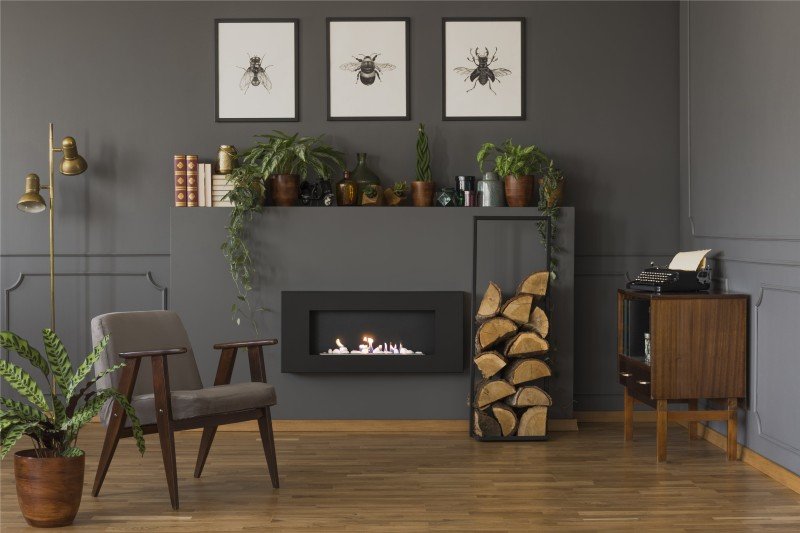The Fireplace: A Warm Embrace of Tradition and Comfort
Fireplaces have been an integral part of human habitation for centuries, functioning as a source of warmth, an event place, and a sign of comfort. While Minimalist Fireplaces might differ incredibly from their ancient forefathers, the attraction of a fireplace sustains. This short article explores the numerous aspects of fireplaces, including their history, function, types, and maintenance, while also resolving often asked questions.
The Evolution of Fireplaces
Fireplaces date back to prehistoric times when open flames were utilized for cooking, heating, and defense from wildlife. Over the centuries, fireplaces evolved from easy fire pits to the advanced renditions we see today. Here is a quick timeline of their advancement:
- Prehistoric Era: Cavemen used open flames for warmth and cooking. Wind and smoke often blew into homes.
- Middle Ages: Stone and brick fireplaces became common in homes and castles, incorporating chimneys to carry smoke outside.
- Renaissance: Elaborately developed mantels emerged, and fireplaces ended up being centers of social interaction.
- Industrial Revolution: Innovations in heating products resulted in a range of designs and performances.
- Modern Era: The advent of gas, electric, and bioethanol fireplaces provided cleaner options to traditional wood-burning units.
Table 1: The Evolution of Fireplaces
| Period | Qualities |
|---|---|
| Prehistoric Era | Open flames for warmth and cooking |
| Middle Ages | Stone and brick structures with early chimneys |
| Renaissance | Ornate mantels, social centers |
| Industrial Revolution | Varied designs, advent of brand-new products |
| Modern Era | Gas, electric, and bioethanol alternatives |
The Purpose of a Fireplace
Fireplaces serve dual functions: they supply physical warmth and develop a psychological environment. Property owners typically gather around the fireplace to bond, share stories, and take pleasure in a cozy setting. The glow of a fire can be soothing, adding to a sense of relaxation and intimacy. Beyond individual satisfaction, fireplaces likewise use functional benefits, including:
- Home Heating: Effective heat source, especially in chillier environments.
- Increased Home Value: A properly designed fireplace can improve the visual worth of a home.
- Emergency situation Heating: In case of power outages, wood-burning fireplaces can serve as an important heat source.
- Aesthetic Appeal: A centerpiece that contributes to interior decoration.
Types of Fireplaces
Today, fireplaces are available in different styles and fuel types, accommodating a diverse series of preferences and settings. Here are some common types:
Wood-Burning Fireplaces:
- Traditional fire pits
- Traditional masonry fireplaces
- Require substantial maintenance and chimney maintenance
Gas Fireplaces:
- Available in both direct vent and ventless ranges
- Easier to utilize and preserve than wood-burning fireplaces
- Offer instantaneous heat with a flick of a switch
Electric Fireplaces:
- Offer associated heat sources without genuine flames
- Typically developed to simulate traditional fireplaces
- Suitable for smaller sized areas and homes without a chimney
Bioethanol Fireplaces:
- Use bioethanol fuel, supplying a sustainable option
- Require no ventilation and can be put anywhere
- Safe and simple to keep
Table 2: Types of Fireplaces
| Type | Fuel Source | Functions | Upkeep Requirements |
|---|---|---|---|
| Wood-Burning | Wood | High ambiance, heat source | Regular chimney cleaning |
| Gas | Natural gas or propane | Instant heat | Minimal, occasional maintenance |
| Electric | Electrical power | Easy setup | Very low maintenance |
| Bioethanol | Bioethanol fuel | Ventless, portable | Low, primarily cleaning |
Upkeep and Safety Considerations
Owning a fireplace involves specific obligations, specifically concerning its safe operation and long-lasting maintenance. Here are necessary maintenance tips and security standards:
Maintenance Tips:
- Annual Inspection: Always have your chimney and fireplace examined a minimum of once a year by a qualified service technician.
- Routine Cleaning: Clean out ashes and debris after each use, and guarantee the flue is open before starting a fire.
- Look for Cracks: Inspect masonry for cracks or damage to prevent structural issues.
- Use Proper Fuel: Only use dry, experienced wood for wood-burning fireplaces; do not burn cured wood.
Safety Guidelines:
- Install Smoke Detectors: Ensure smoke alarm are functional, evaluating them regular monthly and replacing batteries as needed.
- Keep a Fire Extinguisher: Have one close-by, even if a fireplace is used occasionally.
- Monitor Flames: Never leave a fire unattended, and guarantee children and animals are kept track of around the fireplace.
Frequently Asked Questions (FAQs)
1. How can I lower smoke from a wood-burning fireplace?
To minimize smoke, usage dry, skilled wood, and make sure that your chimney is tidy and unobstructed.
2. Is it safe to use gas fireplaces throughout a gas leakage?
Never ever utilize a gas fireplace throughout a gas leakage. Immediately evacuate the location and contact gas services for help.
3. Can I set up an electric fireplace myself?
Electric fireplaces are usually simple to install, but it is advised to seek advice from with experts to make sure security and compliance with regional building codes.
4. What is the best type of fireplace for small areas?
Electric fireplaces or bioethanol models are often best for small spaces, as they do not need extensive ventilation or structural modifications.
Fireplaces have transcended their original purpose of providing heat to become valued components of home style and domesticity. They evoke memories of heat, celebrations, and togetherness while offering functional benefits that improve modern living. By comprehending the numerous kinds of fireplaces, their upkeep, and safety practices, homeowners can enjoy the ageless appeal of this precious function for generations to come.

